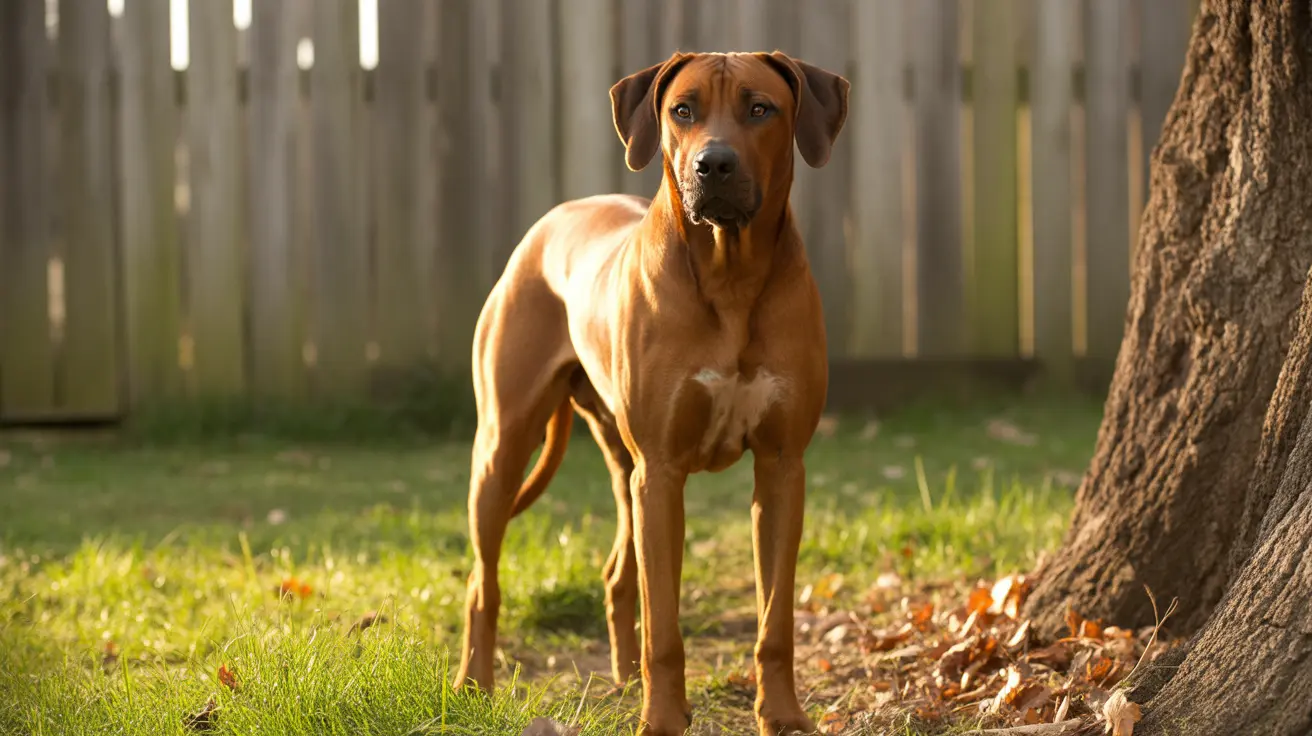The Rhodesian Ridgeback, with its muscular build and impressive history as an African lion hunter, often raises questions about its temperament and potential for aggression. However, understanding the true nature of this remarkable breed reveals a different story than what many might assume.
In this comprehensive guide, we'll explore the real temperament of Rhodesian Ridgebacks, dispel common misconceptions about aggression, and provide expert insights into their behavior and proper care.
Natural Temperament and Personality Traits
Contrary to common misconceptions, Rhodesian Ridgebacks are not inherently aggressive dogs. These intelligent and dignified animals are known for their loyalty, sensitivity, and strong bonds with their family members. Their temperament typically includes:
- Strong protective instincts
- Independent thinking
- Gentle disposition with family
- Natural alertness
- Reserved attitude toward strangers
Understanding Protective vs. Aggressive Behavior
What many people interpret as aggression in Rhodesian Ridgebacks is actually their natural protective instinct. These dogs were bred to be protectors and hunters, but their approach is calculated rather than aggressive. They typically show excellent judgment in assessing real threats versus normal situations.
A well-socialized Ridgeback will remain calm and composed in most situations, only becoming defensive when a genuine threat is perceived. This behavior stems from their historical role as protectors rather than indiscriminate attackers.
The Impact of Training and Socialization
Early socialization and proper training play crucial roles in developing a well-adjusted Rhodesian Ridgeback. These practices help prevent potential behavioral issues and ensure the dog grows into a confident, stable adult:
- Early exposure to various people, animals, and environments
- Consistent positive reinforcement training
- Clear boundary setting
- Regular exercise and mental stimulation
- Professional training guidance when needed
Managing Their Protective Nature
While Rhodesian Ridgebacks have strong protective instincts, these can be effectively managed through proper training and socialization. Key strategies include:
- Teaching clear commands for controlling protective behaviors
- Establishing yourself as a confident, trustworthy leader
- Providing structured socialization opportunities
- Maintaining consistent rules and boundaries
Exercise and Mental Stimulation Needs
A well-exercised Ridgeback is typically a calm and balanced dog. These athletic animals require:
- Daily physical exercise (at least 1-2 hours)
- Mental stimulation through training and puzzle toys
- Structured play sessions
- Opportunities for safe off-leash running in secured areas
Living with a Rhodesian Ridgeback
Success with a Rhodesian Ridgeback comes from understanding their needs and characteristics. These dogs thrive in homes where they receive:
- Clear leadership and guidance
- Consistent training
- Regular exercise
- Family involvement
- Proper socialization opportunities
Frequently Asked Questions
Are Rhodesian Ridgebacks naturally aggressive dogs?
No, Rhodesian Ridgebacks are not naturally aggressive. They are protective and alert by nature, but with proper training and socialization, they typically display gentle and balanced temperaments with their families and appropriate behavior with strangers.
Why do Rhodesian Ridgebacks seem aloof to strangers—is this a sign of aggression?
Aloofness toward strangers is a breed characteristic and not a sign of aggression. This reserved behavior is part of their natural protective instinct and dignified personality, rather than hostile intent.
How can I prevent aggression in my Rhodesian Ridgeback through socialization and training?
Focus on early and consistent socialization, positive reinforcement training methods, and clear boundary setting. Expose your puppy to various people, animals, and situations during their critical development period (before 16 weeks).
What are the common signs of stress or aggression in Rhodesian Ridgebacks, and how can I recognize them?
Watch for signs like stiff body posture, raised hackles, excessive lip licking, avoiding eye contact, and growling. Understanding these early warning signs helps prevent escalation to aggressive behavior.
How can I manage the protective nature of my Rhodesian Ridgeback to avoid potential conflicts with strangers?
Establish clear command control, maintain consistent training, and ensure proper socialization. Teach your dog to look to you for guidance in new situations and reward calm, appropriate behavior around strangers.
Conclusion
While Rhodesian Ridgebacks possess strong protective instincts, they are not inherently aggressive dogs. With proper training, socialization, and understanding of their needs, these magnificent animals make loyal, dignified, and well-balanced family companions. Success with a Ridgeback comes from respecting their nature while providing clear guidance and consistent training throughout their lives.






